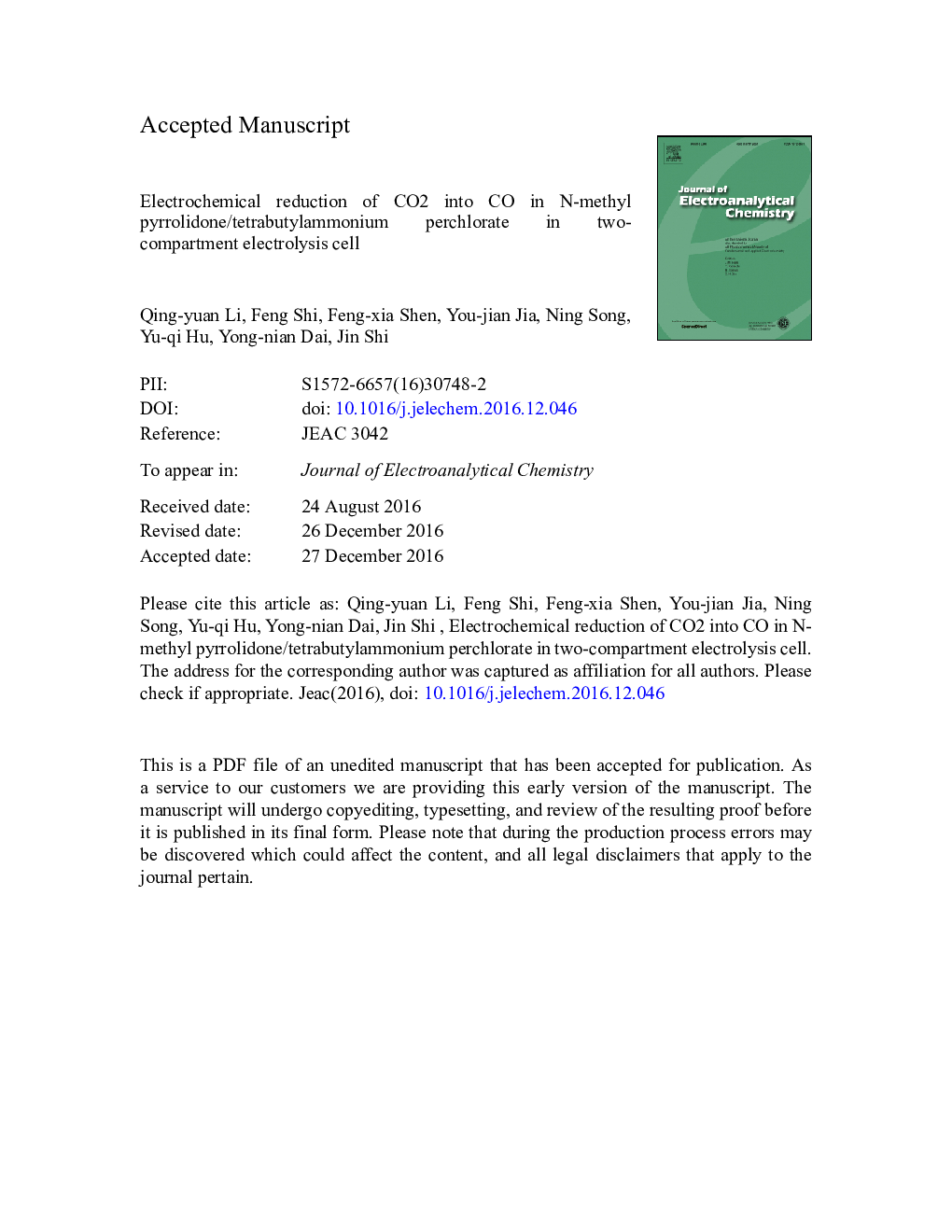| Article ID | Journal | Published Year | Pages | File Type |
|---|---|---|---|---|
| 4908095 | Journal of Electroanalytical Chemistry | 2017 | 29 Pages |
Abstract
A two-compartment electrolysis cell has been designed for carbon dioxide (CO2) electro-reduction into carbon monoxide (CO) in organic electrolyte. This electrolysis cell is separated into two compartments by an ion-exchange membrane (Nafion 117). CO2-saturated organic electrolyte has been used as the catholyte, and 0.1 M H2SO4 aqueous solution has been used as the anolyte. The proton and electron required for CO2 reduction are provided by the electrochemical splitting of water at the anode. The commonly used organic solvents such as N-methyl pyrrolidone (NMP), acetonitrile (AN), propylene carbonate (PC), N,N-dimethylformamide (DMF) and dimethyl sulfoxide (DMSO) have been used as the medium to prepare tetrabutylammonium perchlorate (TBAP)/organic solvent electrolyte. Among these solvents, NMP is deliberately investigated due to its particular properties such as high solubility of CO2, low toxicity, large negative electrochemical window and low volatility. Our experiment results show that CO2 can be reduced into CO in NMP/TBAP solution. The cathodic current density reaches 6.6 mA/cm2 at â 2.4 V (vs ferrocene/ferrocenium). The highest current efficiency reaches 93%. During the long term electrolysis process, no deactivation has been found on the surface of Au electrode, indicating that the NMP/TBAP solution advantageously prevented poisoning of the cathode for CO2 reduction.
Related Topics
Physical Sciences and Engineering
Chemical Engineering
Chemical Engineering (General)
Authors
Qing-yuan Li, Feng Shi, Feng-xia Shen, You-jian Jia, Ning Song, Yu-qi Hu, Yong-nian Dai, Jin Shi,
